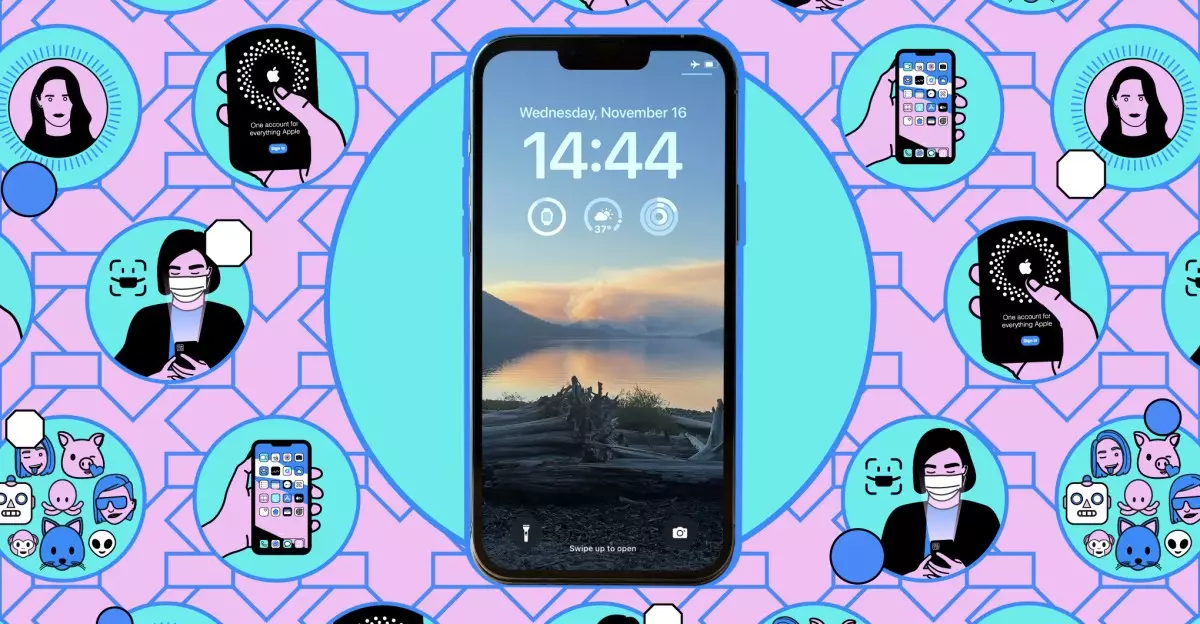The advent of artificial intelligence has ushered in a new era of accessibility and knowledge sharing, with Apple’s Visual Intelligence feature standing at the forefront. Through the lens of your iPhone’s camera, this remarkable technology allows users to decipher the world around them, facilitating a deeper understanding and interaction with their environment. While the concept itself is not entirely novel—echoing functionalities offered by tools like Google Lens—Apple’s approach has distinctive nuances that transform everyday experiences into seamlessly informative encounters.
Unleashing the Power of Visual Recognition
Visual Intelligence empowers users by recognizing and identifying various objects in their proximity, effectively turning everyday interactions into a seamless transaction of information. For instance, scanning a local eatery’s facade can instantly provide details about its hours of operation or menu offerings. In a society where information is often at the tips of our fingers, Visual Intelligence significantly simplifies access, making it not just a technological marvel but a practical utility.
However, this feature is not universally accessible—it requires specific models like the iPhone 16 series and updated iOS versions. While Apple enthusiasts might rejoice, it raises questions about inclusivity and whether the company is alienating users with older devices. Such exclusivity could hinder broader adaptation and diminish the rich potential of aiding individuals across varied technological landscapes.
The Multiple Operational Pathways of Visual Intelligence
Apple has ensured that the initiation of Visual Intelligence is as intuitive as possible. Users can engage this feature through several avenues: via the Camera Control button, customizing action shortcuts, and launching the tool directly from the lock screen or Control Center. This multifaceted approach speaks to Apple’s commitment to creating user-friendly experiences, offering flexibility to adapt to individual user habits and preferences.
Nonetheless, one might critique this flexibility as potentially overwhelming for less tech-savvy users. While the diversified options are designed to enhance interaction, they could also result in a steeper learning curve for some. A streamlined onboarding process or educational tutorial could mitigate this issue, ensuring that users can make full use of Visual Intelligence without feeling daunted by its numerous pathways.
Beyond Recognition: Engaging with Businesses and Information
The functionality of Visual Intelligence extends beyond mere identification; it fosters interactive engagement with businesses. By pointing the camera at a commercial venue, users receive immediate access to essential business information such as menus, delivery options, and booking capabilities. This enhanced connectivity between consumers and businesses simplifies decision-making processes and enhances customer experiences.
However, it’s crucial to reflect on how this feature might reshape consumer behavior. The convenience of immediate information can create a reliance on technology that overshadows traditional interaction with businesses—transforming establishments like restaurants into mere data points rather than destinations. This shift could lead to a homogenization of unique local experiences, as more businesses adapt to compete for visibility in a digital-first environment.
Contextualized Interactivity: Text Recognition and Derived Actions
Visual Intelligence offers powerful text recognition capabilities, allowing users to capture and manipulate written content seamlessly. This feature includes options to summarize, translate, or even read aloud the recognized text, thereby expanding the utility beyond simple identification. Engaging with text through AI-driven prompts—whether asking for clarifications on complex topics or seeking practical advice—projects a shift towards enhancing cognitive interactions with technology.
This transformation of passive consumption to active inquiry is empowering; however, its reliance on AI introduces concerns regarding accuracy and reliability. While AI advancements are promising, there remains the potential for misinterpretations that could lead users astray. A critical lens must be maintained regarding the accuracy of information retrieved, reminding users to cultivate discernment alongside technological tools.
Exploring a New Frontier of Inquiry
Arguably, the most exciting aspect of Visual Intelligence lies in its potential for exploration. Users can leverage prompts to ask specific questions related to the items in view, opening a new frontier of inquiry that transcends conventional search methods. This capacity to initiate conversational interactions with technology could radically change the fabric of learning and exploration, empowering users to engage with the world more dynamically.
However, one must recognize the balance required in fostering such organic exchanges. There’s a risk that the ease of access could translate to superficial understanding; users might lean toward quick answers rather than in-depth research. Technology should enhance curiosity, not supplant it. The challenge will be in harnessing these advancements to cultivate genuine learning experiences, ensuring that interaction with technology is a supplement, not a substitute for independent thought and exploration.
In sum, Apple’s Visual Intelligence is more than just a tool; it’s a reflection of our desire for connection through knowledge. By transforming mundane moments into gateways for discovery, it pushes the boundaries of both technology and human curiosity, heralding an exciting new chapter in our interaction with the world.

